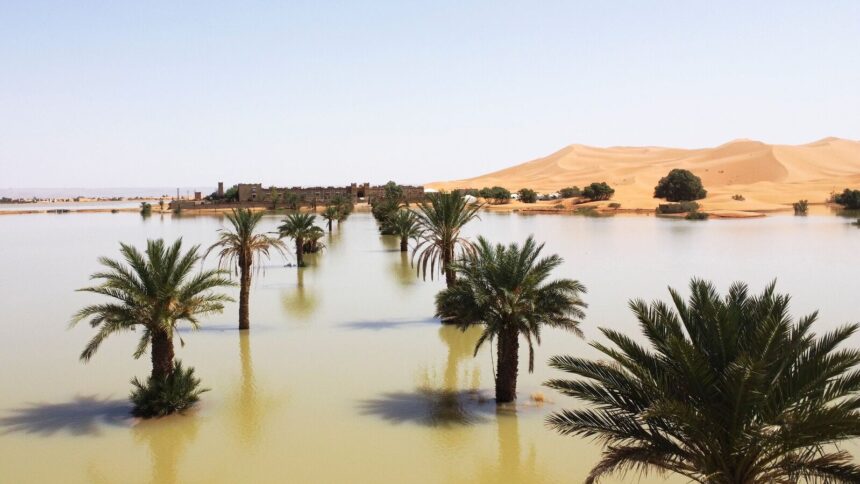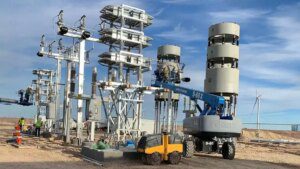The Sahara Desert, known for its extreme aridity, has recently experienced a remarkable change in weather patterns, as reported by the AP.
In September, the village of Tagounite, located 450km south of Rabat, received over 100mm of rain in just 24 hours, according to Morocco’s meteorology agency. This amount of rain surpassed the yearly average of 250 mm for most arid areas in just two days.
The September storms brought about stunning images of water flowing through the desert sands alongside ancient castles and desert vegetation. Satellite images from September 10 captured the runoff and floodwater resulting from the rainfall.
Surprisingly, the region has seen a burst of greenery, with water filling Lake Iriqui, which had been dry for 50 years. Just two weeks prior, the same area was depicted as dry and barren.
Meteorologists suggest that these extratropical storms may have long-lasting effects on the region’s weather. The increased moisture in the air from evaporation could lead to more storms in the future.
The recent rainfall is a welcome relief for Morocco, which has been facing drought conditions for the past six years. Farmers had to leave their fields fallow and communities had to ration water as a result. The replenishment of groundwater aquifers and dammed reservoirs from the September rains is expected to help alleviate the effects of drought, though the full extent of the relief remains uncertain.










